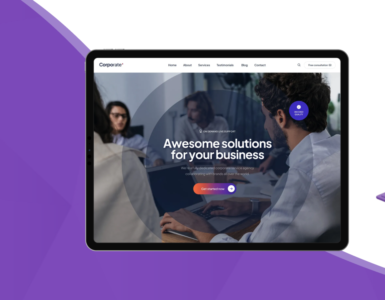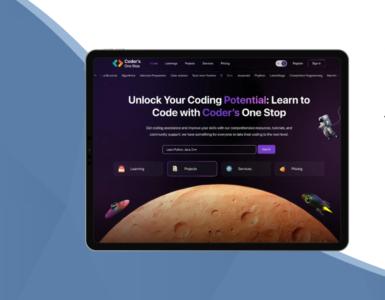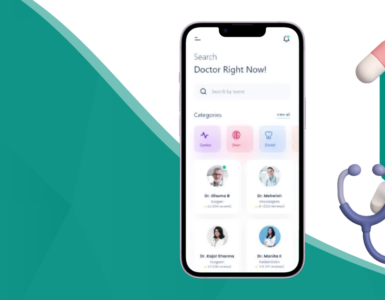For the uninitiated, a widget is a device extension that provides real-time, bite-sized information based on a specific app’s functionality. In recent years, trending iOS applications have embraced widget development—and those who already have widgets are continually working to improve their usability.
Widgets have gained popularity due to their instant accessibility and user-centric design. They allow users to access essential information at a glance, without opening the full application. Popular examples include Weather apps, Calendar applications, and To-Do lists.
iOS developers frequently modify widgets to cater to changing user preferences and information needs.
Why iOS Widgets Matter Today
Widgets are incredibly handy when it comes to quick data retrieval. Users can place them on their home screen or Search screen depending on convenience. Once installed, these widgets are accessible by simply swiping right from the Lock or Home screen.
For iOS developers, the challenge lies not in creating widgets, but in designing ones that are useful, intuitive, and appealing to iPhone users. A good widget adds real value, keeping users engaged without overwhelming them.
How Does a Widget Work?
Widgets track the app’s internal data and present timely updates whenever accessed. Some widgets link to specific parts of an app, enhancing user experience through deep-linking.
For instance:
-
The Timery app offers three different widgets: Saved Timers, Time Tracked, and Current Time Entry, each delivering a different slice of functionality.
-
Apple News offers two types: one for daily top stories and another focused on user-specific topics.
Widgets aren’t just summaries—they are interactive entry points to your app.
How to Add a Widget Extension for iOS
Let’s walk through creating a widget on iOS. But first…
What Are Today Extensions?
In iOS, widgets are implemented via Today Extensions—a type of App Extension that allows apps to display content in the Notification Center and Lock screen.
With Today Extensions, users don’t need to launch the app to get relevant updates.

How to Add a Widget Extension for iOS
Let’s walk through creating a widget on iOS. But first…
What Are Today Extensions?
In iOS, widgets are implemented via Today Extensions—a type of App Extension that allows apps to display content in the Notification Center and Lock screen.
With Today Extensions, users don’t need to launch the app to get relevant updates.
Steps to Create a Widget
-
Open an existing project in Xcode.
-
Go to: File → New → Target.
-
Under iOS, select Today Extension and click Next.
-
Name the widget as per your requirement.
-
Select the parent application.
-
Your Project Navigator will now display a new group named after your widget.
-
Switch the scheme to the widget’s target.
-
Run the project.
You should now see your widget appear in the Notification Center simulator with the preset message.
Designing the Widget’s UI
Once your widget is created, it’s time to design the user interface (UI).
-
Open the Storyboard associated with the widget target.
-
Delete the default label.
-
Add a Table View, Button, and two Labels in the table view cell.
-
Add a UI Image View for a status icon or visual.
-
Include labels for title and description.
-
Set a custom class for the Table View Cell.
-
Use Assistant Editor to create outlet connections.
-
Optionally, add vibrancy effects using a Visual Effect View with Blur for a modern iOS feel.
Tip: You can create a slick visual using WidgetTableViewCell, mimicking native widget designs.
Sharing Data Between App and Widget
Widgets are App Extensions, meaning they operate in isolation from the main app. Therefore, direct data exchange isn’t possible—but there’s a workaround.
Use App Groups to share data between your app and its widget.
Here’s how:
-
Go to your main app target in Xcode.
-
Click on the Capabilities tab.
-
Enable App Groups (Requires an Apple Developer Account).
-
Create an App Group ID (prefix it with
"group."). -
Repeat the process for the widget target, but select the existing app group.
-
Use this group for saving/retrieving data via
UserDefaults.
For more information, refer to Apple’s documentation on App Groups.
Why iOS App Development Companies Should Invest in Widgets
While Android has long had widget functionality, iOS joined the game more fully with iOS 14, introducing:
-
Third-party widgets on the home screen
-
A standardized design framework
-
The Smart Stack widget which layers multiple widgets based on user behavior
This update gave iOS a competitive edge, making widgets a must-have feature for app development companies.
At Siddhi Infosoft, our team of expert developers ensures that iOS applications are equipped with high-performing, useful widgets. Learn more about our iOS App Development Services.
Competitive Advantage
A well-designed widget provides:
-
Better user retention – Widgets serve as mini advertisements for your app.
-
Improved engagement – Real-time utility enhances user interaction.
-
Simplified access – Users get what they need instantly.
Many apps fall behind simply because they fail to offer meaningful widget experiences.
Real Examples of Widget Benefits
-
Fitness apps displaying step counts or activity rings.
-
Finance apps showing account balances or stock tickers.
-
Productivity tools offering reminders, tasks, or notes.
Want to explore more trends like this? Read our related post on Mobile App Development for Business.
Conclusion
Widgets are essential for any iOS application looking to stay relevant and user-centric. As mobile UX expectations grow, developers need to meet users where they are—on the home screen.
By offering on-the-go access, widgets serve both as user conveniences and marketing tools for app developers. It’s a win-win for users and iOS app development companies.
We specialize in designing interactive, efficient, and visually appealing widgets tailored to your app’s functionality and user base. Reach out today to bring your app to the home screen spotlight.

























